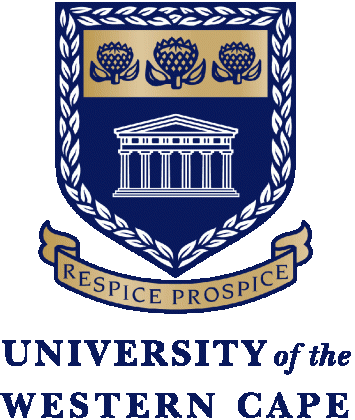For those matrics who don’t immediately after school gain access to their desired university course, or whose results don’t meet the necessary admission requirements for, for example, degree or diploma programmes, an academically constructive bridging year can provide an alternative route of entry into a university.

For those who don’t meet university admission requirements or want to better their matric results, an academic bridging or academic ‘gap’ year may be an alternative route to tertiary studies or the world of work where further studies after school are becoming increasingly important.
Private tertiary education institutions constitute one of the possible gateways to university studies, says Prof. Leopoldt van Huyssteen, head of the Academy for Environmental Leadership SA (AEL). This institution offers an accredited and fully registered higher certificate in conservation ecology on NQF level five.
For those matrics who don’t immediately after school gain access to their desired university course, or whose results don’t meet the necessary admission requirements for, for example, degree or diploma programmes, an academically constructive bridging year can provide an alternative route of entry into a university. This is according to Van Huyssteen one of the reasons why many prospective students enrol in the AEL’s programme.
An academic bridging year also serves well for many matrics who are unsure about what to study and need more time for considering their options before committing to a university course.
Gap years should be structured with guidance to provide students with opportunities that are tailored to their need to find focus for their future.
With the AEL’s higher certificate under their belts, students can, for instance, either undertake further studies or enter the job market to start building a career as an environmental impact assessor or controller, or as a professional in a related position in the agriculture or mining sectors.
“It is a fully-fledged tertiary qualification on the grounds of which students can, after only one year of study, be employed in the workplace”, Van Huyssteen explains.
Other bridging year programmes currently available locally include a focus on, for example, life skills, personal development, and adventure and outdoor activities.
The Young Minds Programme of the University of Stellenbosch Business School, for instance, offers a career-focused gap year with a strong entrepreneurial approach, whilst the Peritum Agri Institute and the Reitz Agricultural Academy offer a bridging year for students wanting to study agriculture. In addition, the Northern Cape Nature Academy’s offering includes an accredited field guide course.
These programmes differ in terms of their academic content and weight, and offer unique routes to further studies.
The Gap Year Association (GYA), an international association based in the USA, notes that almost all gap-year students enrol or resume higher education post-gap year. Approximately 90 per cent of students who took a gap year globally returned to tertiary studies within a year. In 2020, nearly half of GYA respondents reported that their gap year experience increased their likelihood of completing a bachelor’s degree. In addition, almost all GYA respondents reported that their gap year prepared them well for higher education and the workforce.
Creating meaningful opportunities
The gap between school and tertiary education is huge in many aspects, causing thousands of students to fall by the wayside each year. Researchers at Stellenbosch University recently pointed out that, of every 100 children who start school in a given year, 60 proceed to write matric, 37 of them pass, 14 pass with marks that qualify them for university entrance (the ‘Bachelor’s pass’), 12 go to university, and 4 gain a degree within 6 years.
Also, many first-year students experience problems adapting to the university workload and tempo. Recent analyses have shown this phenomenon to result in serious throughput problems and very low student success rates in higher education. Failing a year at university is financially costly and often a mental setback due to disappointed expectations.
Nowadays, many universities invest in focused academic programmes that can serve as a bridging year for students whose matric marks for maths and science were too low to gain entry to courses in science, technology, engineering, or maths. Also on offer are extended degree programmes that spread out the first academic year over two years.
The University of the Free State, for example, offers ‘university access programmes’ that allow students to ‘perform themselves into’ higher education. These programmes include a higher certificate in economic and management sciences or natural and agricultural sciences (with maths, chemistry, and agriculture study options). In addition, successful students gain access to appropriate further university degree studies with credit recognition and/or recognition of prior learning.
Stellenbosch University’s SciMathUS programme offers matrics who passed with an average of at least 60% (but without an exemption for degree studies) a second opportunity to better their results in mathematics and science so that they may re-apply for university programmes with specific entry requirements. The programme aims to grow the pool of students who qualify for access into courses where maths and physical sciences are prerequisites, specifically by enabling them to rewrite the National Senior Certificate (NSC) in these subjects.
Participating students may choose between a science and accounting stream and have the added bonus of developing reasoning, interpersonal, and problem-solving skills in an academic literacy course. A computer skills course equips them for the digital age.
Since the programme’s inception 20 years ago, SciMathUS students have, on average, improved their mathematics and physical sciences NSC results by 15% after completion of the programme. Between 2005 and 2019, approximately 350 students proceeded to obtain a degree.
Students who do an academic gap year are often more mature, mentally stronger, more independent and much better prepared for tertiary studies, Van Huyssteen indicates.
In 2020, the AEL students who went on to further their studies all passed their first year. This is a noteworthy outcome, considering only one out of every three first-year students who enter university directly after matric typically succeeds in passing the year. Student success in the AEL’s academic bridging year is constantly higher than 90 per cent, providing an excellent return on investment in tertiary education.
It is now time for those with disappointing matric results or those who are still uncertain about their future plans to strategise and explore their alternatives. Van Huyssteen advises: “Don’t sit in uncertainty. Consider an academic gap year program


